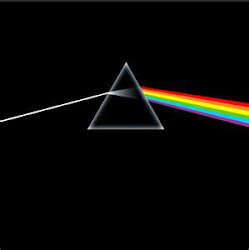
www.kopihangtuah.blogspot.com
WHAT IS ART BASEL?
Art Basel stages the world's premier Modern and contemporary art shows, held annually in Basel, Miami Beach, and Hong Kong. Founded by gallerists in 1970, Art Basel has been a driving force in supporting the role that galleries play in the nurturing of artists, and the development and promotion of visual arts globally. In addition to showing exciting works by world-renowned artists, Art Basel is always innovating, thus expanding its platform for new artists who represent the vanguard of the visual arts. Its worldwide reputation – earned over the last forty five years – for showing work of the highest merit, and attracting the world's leading gallerists and collectors, has made Art Basel the place where the artworld meets.
HISTORY AND ROLE OF ART BASEL
In 1970, a few Basel gallerists put their passion and determination behind an ambitious vision, and now, over forty five years later, Art Basel is recognized as the premier international art show, providing a platform for artists and gallerists from around the world. The dynamic relationships between art galleries, their artists, private collectors and public institutions play an essential role in today's artworld, and connecting the international art community has been Art Basel's goal since its beginning. Three annual shows bring the artworld together in some of the world's most exciting venues: Basel, in the heart of Europe; Miami Beach at the nexus of North and South America; and Hong Kong, the gateway to Asia.
THE PEOPLE AT ART BASEL
Some of the most prominent and respected figures in the international artworld have shared their knowledge, ideas and expertise during Art Basel's Salon and Conversations Series. Behind Art Basel stands a team of individuals with a range and depth of experience in the artworld and related disciplines. Each member channels his or her expertise into making Art Basel shows the most prestigious platform for artists, gallerists, and collectors.
WHAT CAN CONTEMPORARY ART DO?
Messages Portrayed
- Reflection of what society is concerned with
- Safer alternative to direct verbal opinion – in Egypt 40,000 jailed
- Medium of philosophical package
- Expression on politics, economics and social issues
- Allowing immediate response to issues in life
Its DNA
- Cultural space for all to be involved immediately across all faculties
- If it portrays unexplainable matters, value of art will be destroyed
- The need for expression is stronger than economic needs of art
- Collectors do not drive contemporary art direction
- What artists experience in daily lives that drive contemporary art
- Manifestation of life into expressions that artists cannot escape
- Must immediately happen in response to issues in life
Developmental Aspects
- Professionalised artists positively
- Encodes knowledge in the body of art (as opposed to other genre)
- Encourages plurality of medium used for art
Critical Concerns
- Continuity of contemporary art needs periodic pause
- The pauses are “autumn/winter” before it can “spring/summer”
- New ideas require gestation of mind searching and experience
- Too much judgement from public tends to kill contemporary art
THE MYTH OF GLOBAL ART MARKET
- Art Basel has always been nominated by the Big 4: USA, Germany, Switzerland and UK for the past 45 years
- It started on the basis of merchants trading currencies in fairs on private basis to allow international trade
- Naturally Basel became a place for art exchange for those traders whom became the traditional movers of art economic culture
- More than 50% of the art slots are given to European gallerists
- There is a move to push for more art slots from other countrie
- In year 2000, art movement in Brazil grew when collectors start being appointed on the boards of art museums and as a result, Art Basel has since started to allow more art slots for South Americans
- As an extension to Art Basel, Art Basel Miami and Art Basel Hong Kong were introduced to house more slots from other countries
- Saatchi London has shown initiative to be more global by introducing special sections for African art and South American art
FUTURE OF CONTEMPORARY ART?
- A significant factor discouraging art economics would be tax rates on art sales: Brazil at 60% and China at 30%
- Data shows that there is a correlation of artists who gets approved for Art Basel with their successful placement to do art shows at galleries and museums
- Art now seen to be a catalyst for the tourism drive evident by the increase in businesses in Miami because of Art Basel Miami
- The auctions in China is still predominantly show casing classical art but they are increasingly receptive in accepting contemporary art
- Many organisations now offer art residency: Foundation Gallerie Lafayatte in Paris, Google Paris Residency and The Land in Thailand
- Other art fairs are gaining momentum: Art Bienniel Manifesta II (2016) in Zurich that offers grants for international young artists aged 25 – 40
- Why Zurich? Global culture and; where money is, art gets support

* kopihangtuah
| mcmlxxv:viii:xxix |












































